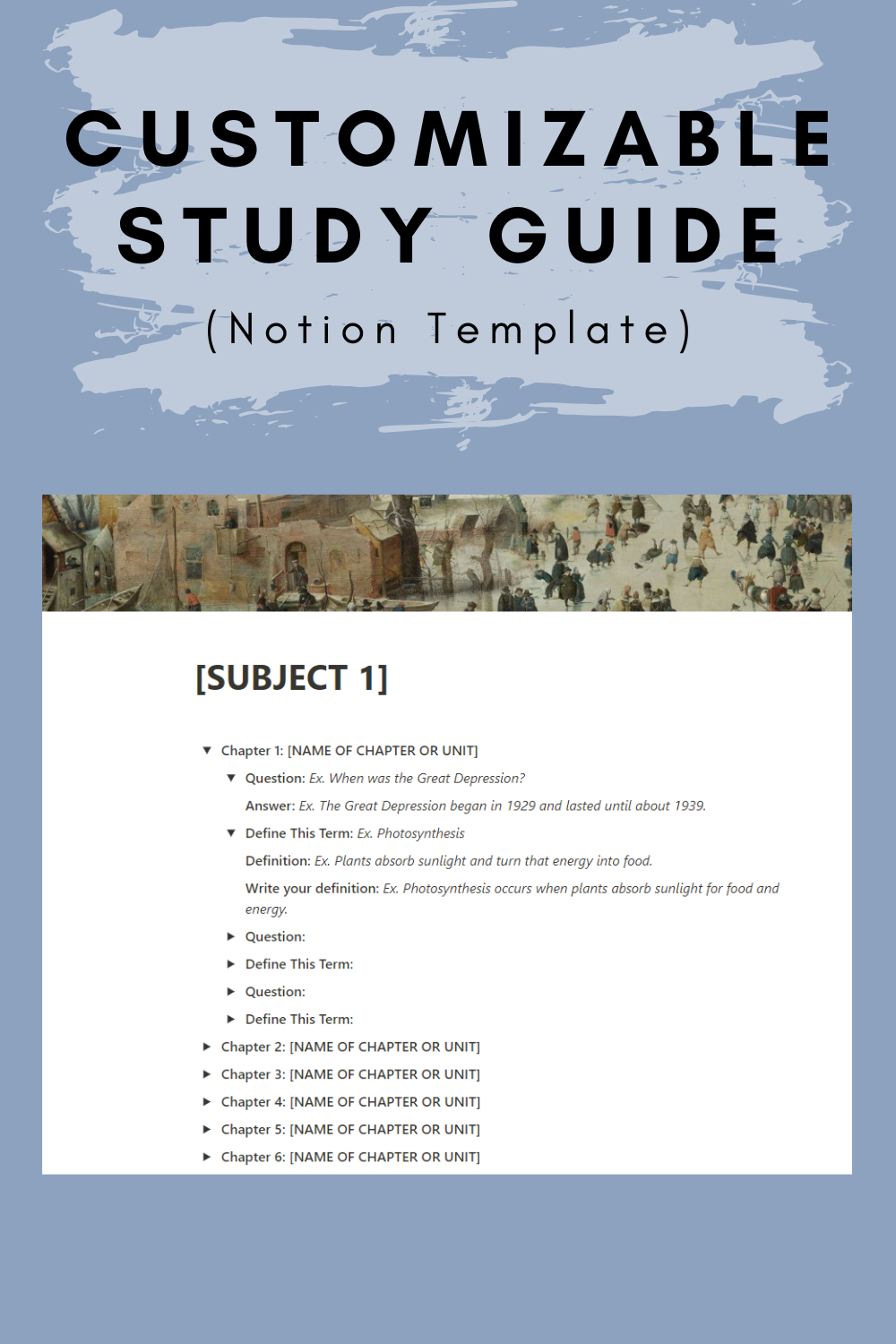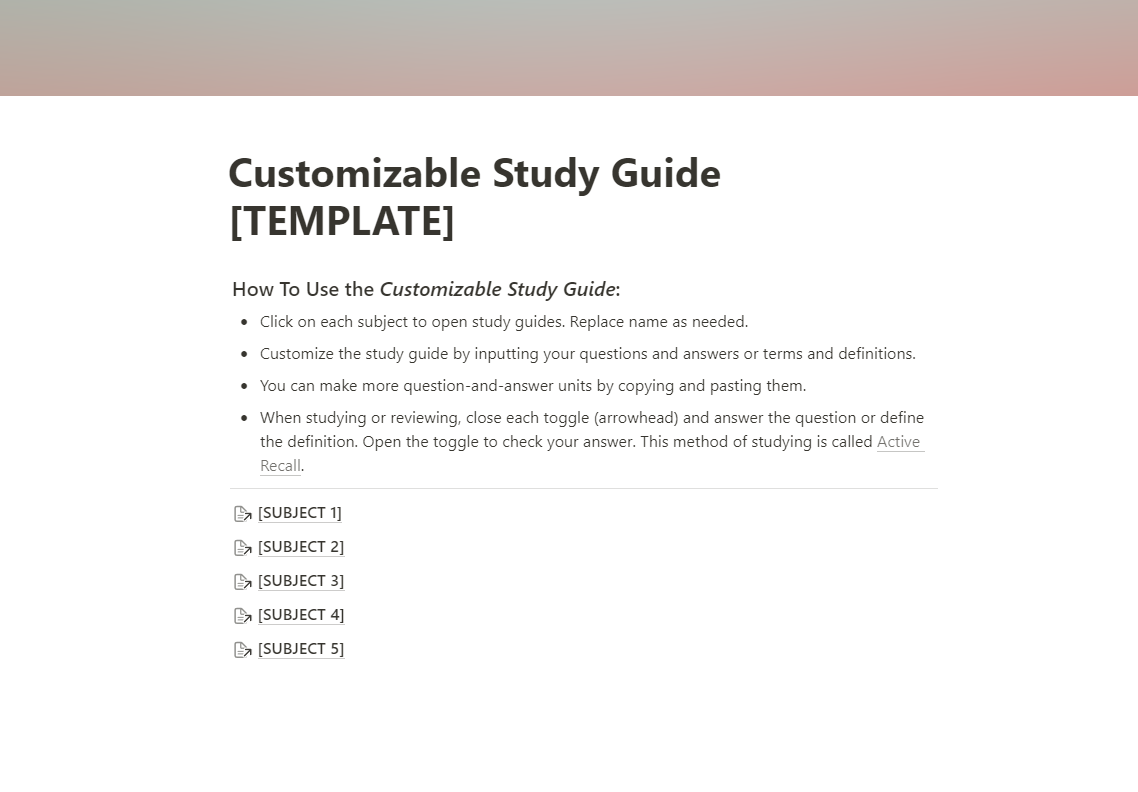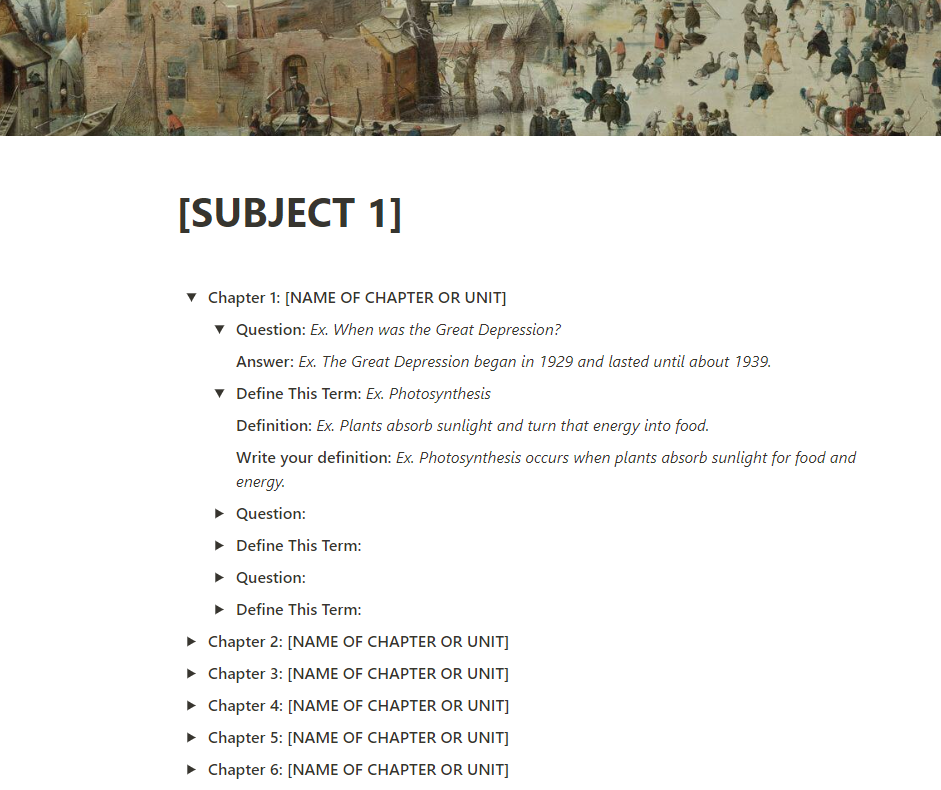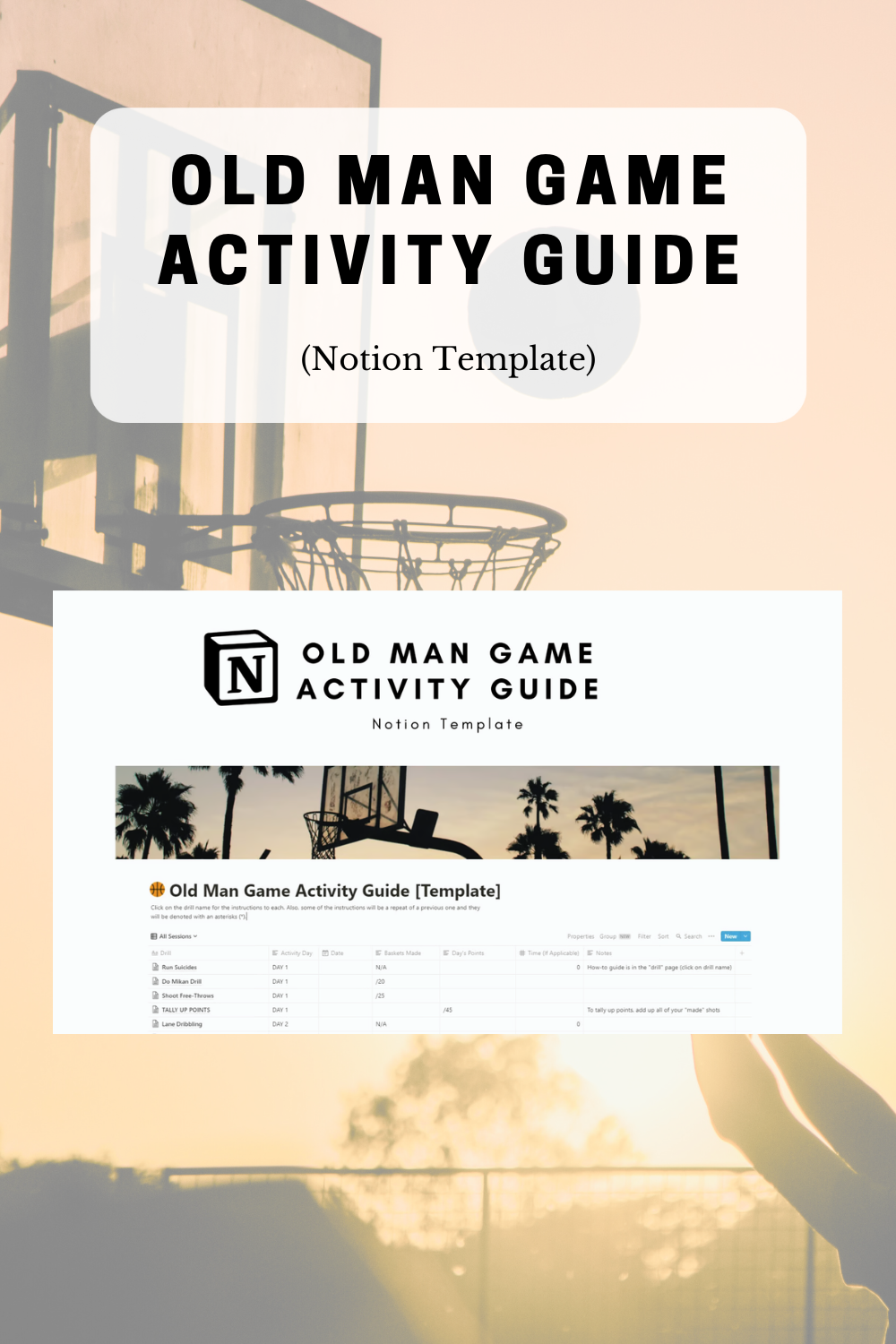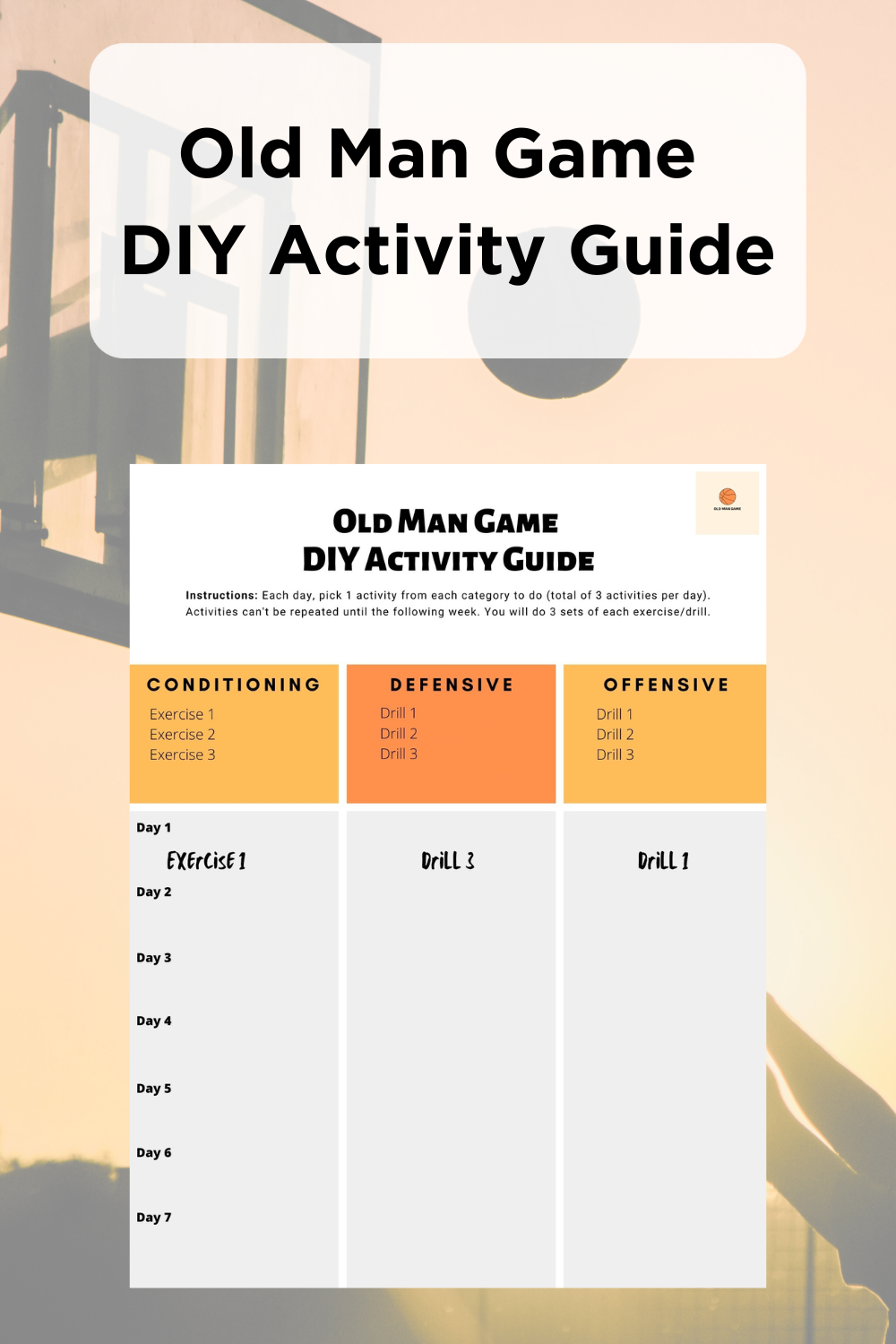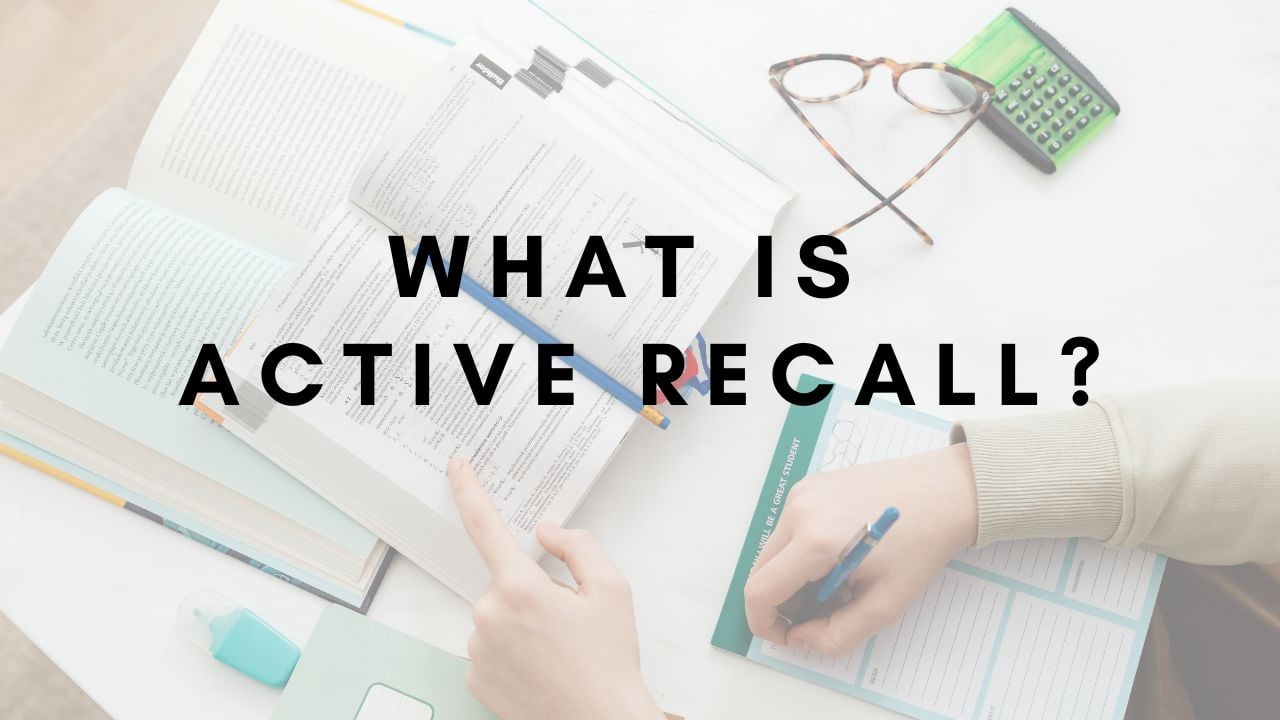
Want to remember your notes better for an upcoming exam? Try using active recall.
Have you noticed that you just can’t seem to remember information after a while?
You would read something from a textbook, write down the important stuff, re-read it, and a couple of months later, won’t remember it for a final exam?
The reason why you can’t remember that information is because you’ve been passively studying. This is only good for short-term memorization.
Instead, you should use active recall.
Buy the Customizable Study Guide here.
What is Active Recall?
Active recall is a learning technique where you use memory stimulation to actively retrieve information.
This is different than passive review (how most students study) because, well, it’s active.
When you passively learn, you’re trying to remember facts from your notes or readings.
But when you actively try to recall information, you’re forcing yourself to pull out facts you’ve previously learned by quizzing yourself.
This, in my opinion, is a better way to study because active recall gets you to understand and connect facts.
Passive review, on the other hand, is just straight-up memorization. And it’s always better to understand than to memorize when learning.
How Does Active Recall Work?
When you use active recall to study, you are using an effect called the psychological testing effect.
The psychological testing effect is a theory that claims a person’s long-term memory increases when they spend some of their study time retrieving information.
An example of this would be a short quiz after each chapter. Or it could be a quick critical thinking session on the complex concepts.
How to Use Active Recall to Study
One of the best ways to use active recall when studying is to write down important facts as questions (Jeopardy it).
Then on the backside of the paper (or on a different sheet), write down the concepts or theories.
For example, if you were learning about important events that happened in 1994, you can write down:
- “What is apartheid and what happened to it in 1994?”
Then, on a separate sheet of paper, write down:
- “Apartheid was a South African policy that segregated White people and non-White people. It was fully abolished in 1994.”
Now, when you review your notes, you will use the question to retrieve the information you just learned actively.
Some other ways you can apply this method are by using the toggle function on an app called Notion or by using flashcards.
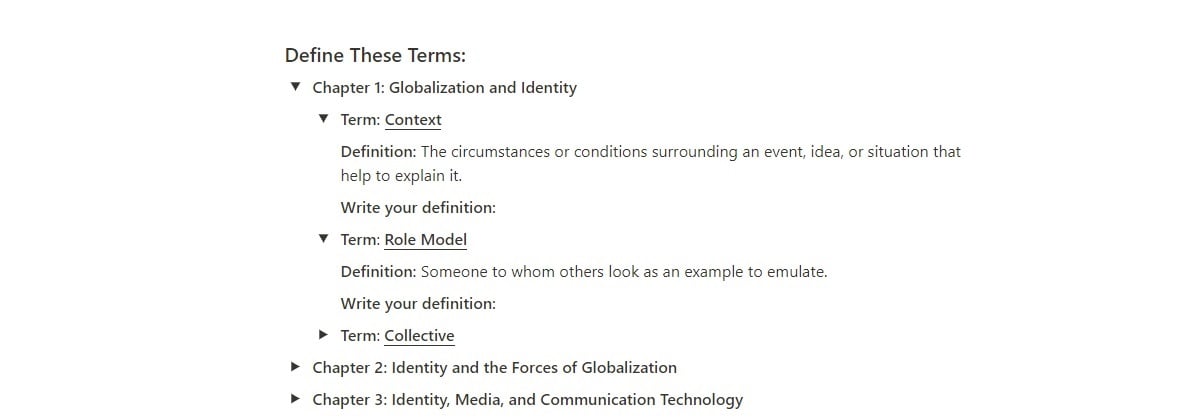
(Notion Study Guide Template)
Combining Active Recall and the Feynman Technique
If you want to make active recall even more effective (which you really should), combine it with the
Feynman Technique.
The Feynman Technique, created by physicist Richard Feynman, is a learning method.
This technique helps you break down complex facts into plain language, making it easier to understand and explain.
So, to combine the two methods, you would simplify your “answers” to the point where a person with no knowledge of the topic could understand them.
This will ensure you fully comprehend it because breaking down complicated theories into layperson terms is challenging.
Conclusion
There are many ways you can apply active recall to your studies.
You just have to experiment and find what works best for you. You have to get creative with it.
Once you figure it out, this study hack will benefit you enormously.
Thus, find a way that best suits you and start applying this method.

